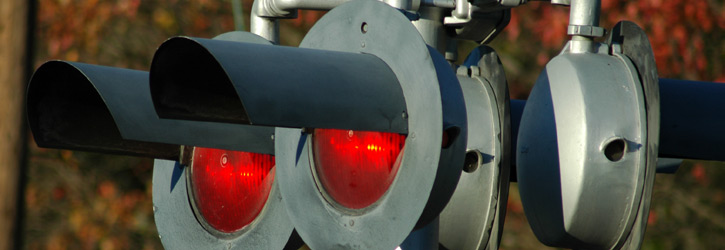
Quiet Zones
As many communities have developed in close proximity to rail lines, some local entities may choose to implement quiet zones to limit disruption from rail activity to nearby residents. RLBA has performed multiple feasibility analyses as well as conducted field inspections to analyze whether a quiet zone can be qualified in a community. Many local government clients have benefited from RLBA’s expertise in federal regulations to identify opportunities to increase pedestrian safety around quiet zones. An RLBA associate was pivotal in drafting the regulations that permit implementation of quiet zones and our in-house expertise on the subject keeps costs low and deliverables on schedule.
Select Project Descriptions:
WYOMING DEPARTMENT OF TRANSPORTATION:
Wyoming DOT retained RLBA to conduct a statewide assessment of quiet zone feasibility. RLBA inspected 84 grade crossings throughout the state, performed a field assessment of those crossings, determined what supplementary safety measure would be appropriate at each crossing, if necessary, and estimated costs. The statewide assessment was applied to crossings in 34 municipalities of 100 or more people with two or more train movements per day. In a second project, RLBA also developed a ranking formula to assist the state in determining priorities.
COUNTY OF ULSTER, NY:
The County of Ulster, New York, selected RLBA to perform a Quiet Zone inspection and implementation plan to propose pedestrian safety and mobility improvements regarding grade crossings on CSX Transportation’s River Line through the City of Kingston. The study investigated the feasibility and cost of implementing Supplementary Safety Measures, which provide the Federally required degree of protection sufficient to replace the sounding of locomotive horns at twelve crossings in the city and county. Public involvement was utilized to inform and to obtain public input. A diagnostic team was organized that went on-site to inspect all twelve crossings, which after analyzing the team’s findings, made recommendations in regard to each crossing. Because trains sometime block street crossings in the City of Kingston, a range of measures were examined to provide adequate protection.
CITY OF FREMONT, CA:
RLBA was selected by the City of Fremont, California, to undertake a study of grade crossings on three rail corridors owned and operated by Union Pacific Railroad, to determine the feasibility of establishing Quiet Zones in accordance with federal and state laws governing the use of locomotive horns at grade crossings. The study was performed in accordance with the Federal Railroad Administration’s Final Rule, “Use of Locomotive Horns at Highway-Rail Grade Crossings.” The study comprehended:
- inventorying the grade crossings in Fremont;
- identifying safety improvements, utilizing the Federal Railroad Administration’s Risk Index Calculator;
- recommending an implementation plan including identification of funding opportunities; and
- coordinating with federal, state, railroad and local officials, that conducted an on-site evaluation of Quiet Zone safety measures.
